Sake is among the most popular beverages in Japan, and it has many fans worldwide.
To enjoy this drink, it’s best to learn how to take it correctly.

Although you can drink it warm or cold, sake tastes best when served chilled.
Table of Contents
History of Serving Sake
If you’re consuming sake for the first time, you’ll likely drink it hot or warm.
In the past, sake underwent heating before being served. This tradition began in the Heian period (794 A.D.)
Heating sake increases the sweetness and decreases spiciness and bitterness. The resultant drink has an expended flavor that feels lighter than the original sake.
Since the sweetness is at its peak at around 35oC, it’s advisable to warm sake if you can’t handle its sour taste.
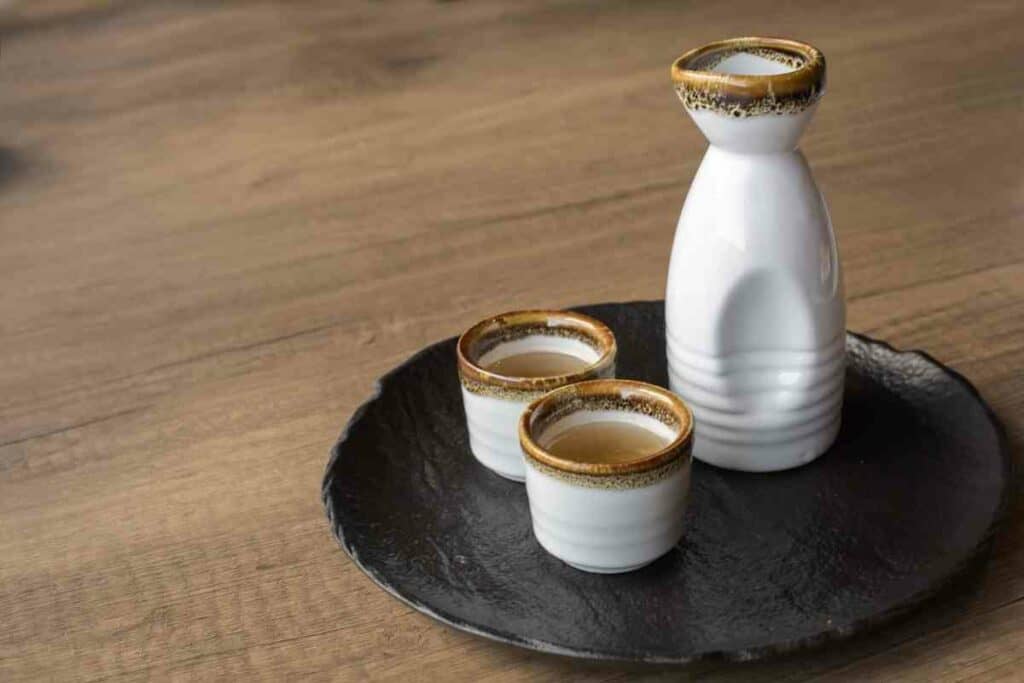
People used wooden tanks to brew sake until the early 20th century when newer equipment took over.
The replacement of wooden tanks meant that sake no longer had a woody flavor and aroma.
Regardless, some specialty stores still offer this sake, where it’s called ‘taru-zake.’
Three to four decades ago, sake brewing underwent significant change.
New technology and equipment replaced wooden tanks, and the introduction of new yeast strains enabled the production of a broader range of sake flavors.
As a Result – Fruity and flowery essences gained massive popularity in the market.
Today, stainless-steel tanks with ceramic lining are used to brew sake, after which it’s stored in glass bottles.
Rice milling technology is also better than it was 40 years ago. Therefore, heating it can destroy the flavors.
Read also – Japanese sake sets
Warm Sake
Warm sake is called ‘atsukan.’ This blanket term covers various degrees of hotness, ranging from 30oC to 40o C.
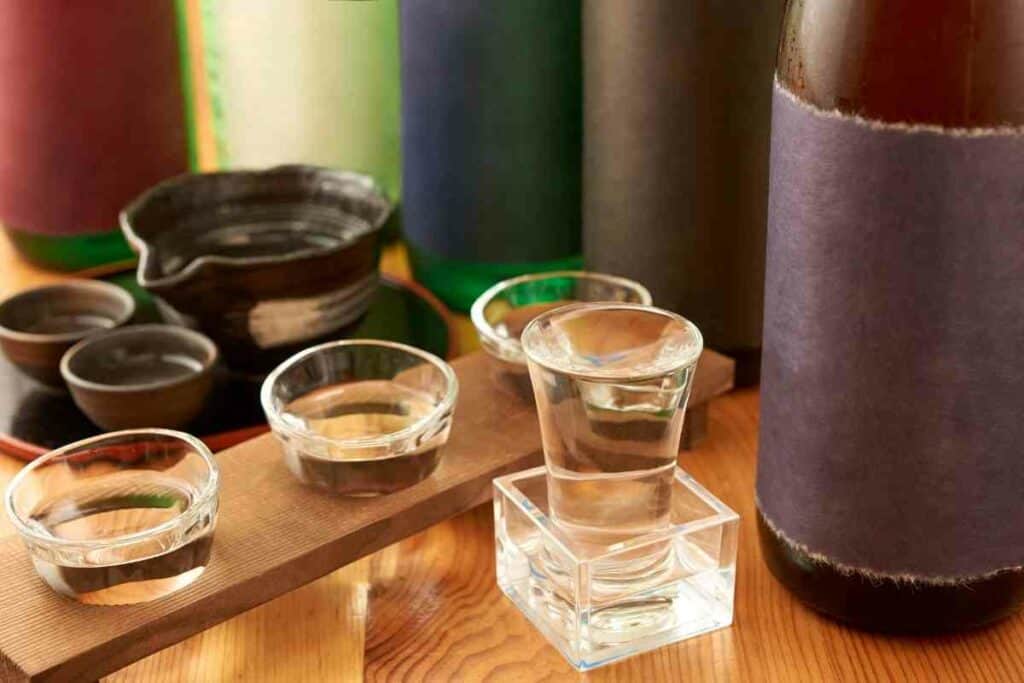
The lowest stage in this range is called ‘Hinatakan’ (30oC), while the highest is known as ‘Tobikirikan’ (more than 55oC).
As mentioned earlier, sake is at its sweetest at 35oC. When temperatures increase beyond 40oC, it tastes dry and sharp.
There are three methods of preparing atsukan.
The best way to heat sake involves putting the drink in a bottle and dipping it in a pot with boiled water, with the fire off.
Alternatively – You can heat it in boiling water without putting out the fire. Lastly, you can place it in a microwave.
Benefits of Atsukan
Alcohol cools the body.
Therefore, drinking it in summer makes you feel better.
However, this effect isn’t good for winter, as it makes you feel colder.
It’s why you should drink atsukan during the cold season.
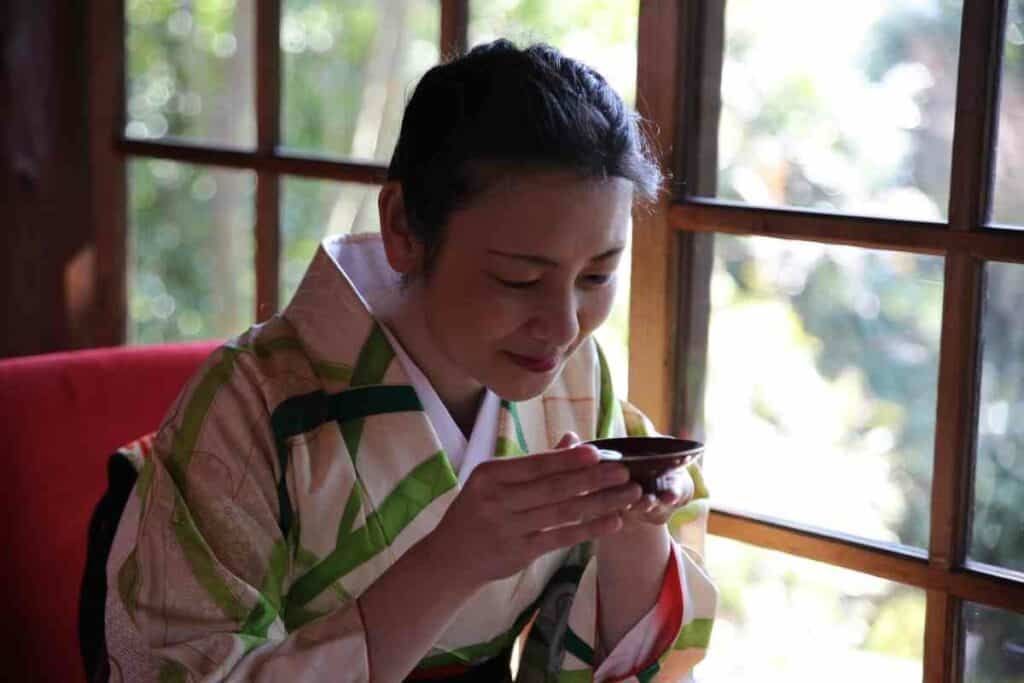
Your body doesn’t absorb alcohol unless it has the same temperature. You must wait until the body warms it up when you drink cold sake before you feel tipsy.
On the contrary, drinking hot sake makes you drunk faster. This means you’re less likely to get a hangover.
Cold Sake
Sake experts agree that high-quality sake is best served chilled.
Premium sake flavors include daiginjoshu, ginjoshu, Junmai daiginjoshu, and unpasteurized namazake.
These are tastiest at 15oC, where the flavors and fragrances are refined and sweetest.
You can further reduce the temperatures.
Low-temperature variants include ‘hanahie’ and ‘yukihie.’ However, they are mild because the chilling subdues the flavors and fragrances.
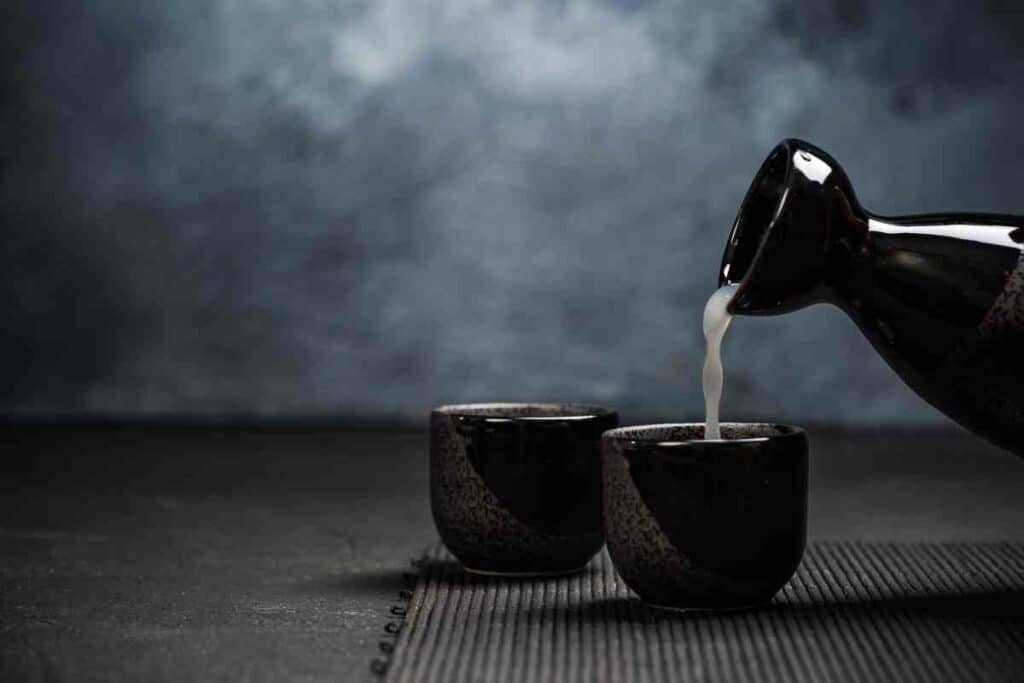
Because it’s unpasteurized, you must always keep the namazake below room temperature.
More importantly, you should never warm it.
Although chilling sake makes some flavors tastier, you shouldn’t overdo it. It covers brewing flaws but subdues the drink’s refined element, especially flavors and aroma.
Keep In Mind – Most people who claim to love ice-cold sake are used to taking inferior types. It’s unfair to make such a wrong recommendation to anybody looking to enjoy fine sake.
Room Temperature Sake
Sometimes, you can opt to serve sake at room temperature.
This is the most versatile way of serving this beverage. It works for all sake types, except for premium daiginjoshu and ginjoshu.
Nevertheless, you can serve these two at room temperature without significantly affecting aroma, flavor, and overall taste.
How Do You Serve and Drink Sake?
If you’re drinking with others, never serve yourself.
Japanese tradition requires diners to pour for each other.
When your cup is empty, lift your cup towards a drinking buddy for refilling.
And don’t forget to return the favor when your friend needs more, lest you want to appear rude.
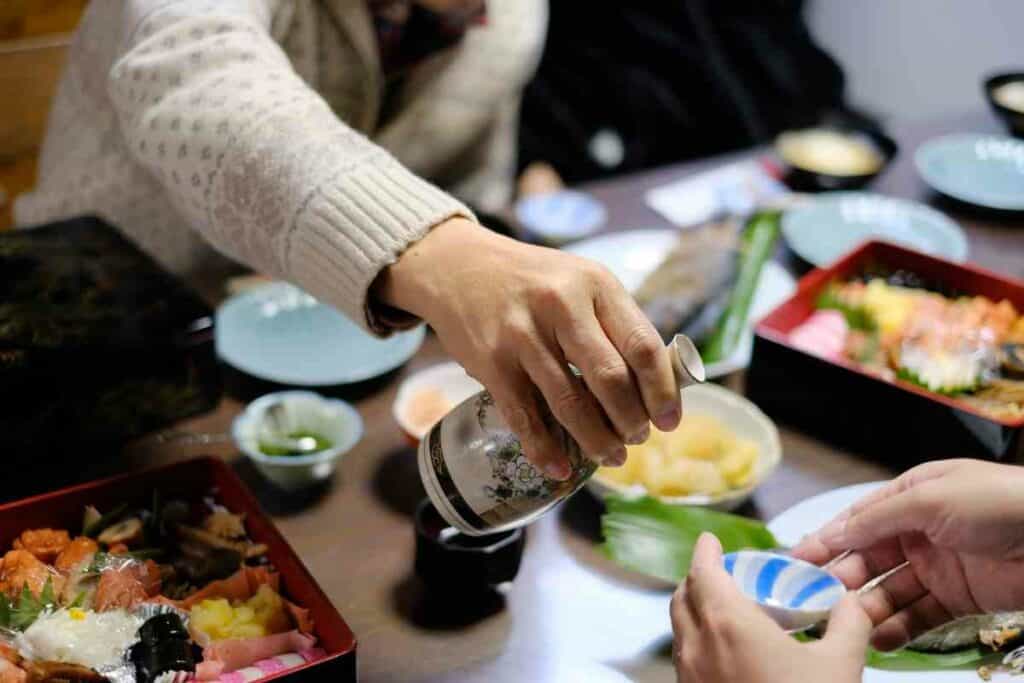
After being served, please don’t drink it like a tequila shot. Sake is a ceremonial beverage served in small cups called ‘Choko.’
Besides making you look like a fool to experienced sake drinkers, shooting the drink makes it less effective.
Instead, it would be best to sip it like tea or expensive wine to savor its flavors.
Wrapping Up
Ultimately, your preferred flavor determines the best way to make sake.
However, the general rule states that the more refined the quality, the better it is served chilled.
Regardless of how you take it, sake is one of the most unique and versatile alcoholic beverages worldwide.
So if you want to enjoy Japanese meals, consider accompanying them with sake.
- Japanese Traditional Sweets (Wagashi): A Guide to Their Origins and Varieties
- A Taste of Japan in Every Bite – Japanese Candy & Snack Box Review
- Bubble Tea vs Boba Compared: What’s the Difference?
- Best Izakaya Foods for a Relaxed Night Out (My Top 10 Picks)
- Edo Kiriko Whiskey Glasses (Japanese Heritage in Every Pour)
- Japanese Viral Foods on Social Media (Discover the Top 10)









